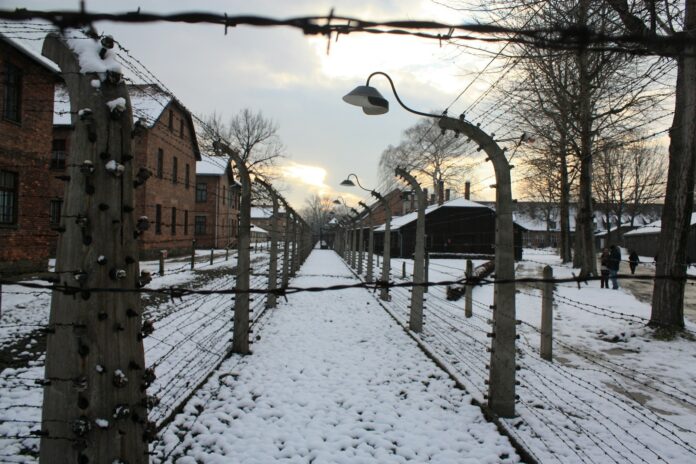Auschwitz & Birkenau: Live-Guided Tour with Transportation and Hotel Pickup
The Auschwitz-Birkenau concentration camps stand as somber reminders of human history’s darkest chapters. Today, they serve as powerful memorials to the victims of the Holocaust. Experiencing these sites through a live-guided tour enriches understanding and appreciation of their historical significance. This article explores everything you need to know about visiting Auschwitz and Birkenau, including the logistics, tour details, and additional insights that will enhance your visit.
Understanding Auschwitz and Birkenau
Auschwitz, located near the town of Oswiecim in Poland, functioned as a concentration and extermination camp from 1940 until 1945. The complex consists of three main camps: Auschwitz I, Auschwitz II-Birkenau, and Auschwitz III-Monowitz. Each site plays a crucial role in understanding the systematic genocide perpetrated during World War II.
Auschwitz I served primarily as a concentration camp, where political prisoners, intellectuals, and members of various resistance movements were detained. In contrast, Birkenau, or Auschwitz II, was designed as an extermination camp, where mass killings occurred. The scale and horror of the events that unfolded here make it imperative for visitors to approach this site with respect and solemnity.
The Importance of a Live-Guided Tour
Participating in a live-guided tour provides visitors with an in-depth understanding of the historical context and personal stories associated with Auschwitz and Birkenau. Knowledgeable guides share insights that enhance the experience, giving voice to the victims and explaining the events that transpired at these sites. A guided tour aids in grasping the magnitude of the Holocaust, fostering a deeper emotional connection to the memorials.
Logistics of the Tour: What to Expect
When planning your visit, it is crucial to account for the logistics of the tour. Most guided tours of Auschwitz and Birkenau include transportation, often providing hotel pickup for added convenience. Here’s what to expect during the tour:
- Duration: The full tour typically lasts between 6 to 7 hours, including transportation time.
- Transportation: Tours include round-trip transportation from your accommodation to the camps, ensuring a hassle-free experience.
- Entry Fees: The cost of the tour usually encompasses entry fees to both Auschwitz I and Birkenau.
- Language: Tours are available in multiple languages, ensuring that non-Polish speakers can engage fully with the content.
- Group Size: Most tours are conducted in small groups to facilitate better interaction with the guide and a more personal experience.
How to Book on Viator
Booking your Auschwitz and Birkenau tour is straightforward. We recommend using Viator for a reliable and user-friendly experience. Follow these steps to secure your spot:
- Visit the Viator website: Viator Booking Page.
- Search for the “Auschwitz & Birkenau: Live-Guided Tour” option.
- Select your preferred date and time.
- Fill in the required information and proceed to payment.
- Receive confirmation via email and prepare for your visit.
What to Bring on the Tour
Visitors should prepare adequately for their tour to ensure a comfortable and respectful experience. Below are essential items and considerations:
- Comfortable Footwear: The sites require a significant amount of walking, so sturdy shoes are advisable.
- Weather-Appropriate Clothing: The weather can change quickly, so dress in layers and check forecasts beforehand.
- Water and Snacks: While food options are limited, bringing water and light snacks can be helpful during your visit.
- Respectful Attire: Given the somber nature of the site, visitors are urged to dress modestly.
Rules and Etiquette During Your Visit
Maintaining decorum is essential when visiting Auschwitz and Birkenau. Here are some important guidelines to follow:
- Silence: Speak softly to honor the memory of those who suffered.
- No Photography in Certain Areas: Be aware of areas where photography is prohibited, particularly memorial sites.
- Follow the Guide: Listen to your guide and adhere to their instructions throughout the tour.
- Respect Memorials: Show reverence at memorial sites and avoid loud or disruptive behavior.
Reflections on the Experience
Visiting Auschwitz and Birkenau is a profound experience that may evoke a range of emotions. It provides a critical opportunity to reflect on the atrocities of the past and the importance of remembrance. Engaging with the stories of those who suffered helps ensure that history does not repeat itself. It is a chance to honor the victims and to commit to fostering a more compassionate world.
Conclusion
In conclusion, a live-guided tour of Auschwitz and Birkenau with transportation and hotel pickup is an essential experience for those wishing to understand the historical significance of these sites. The combination of expert guidance, logistical convenience, and the opportunity for deep reflection creates a meaningful visit. For more information and to book your tour, visit Viator. We hope this article serves as a valuable resource for your journey to these important historical sites.
Disclaimer: This information is accurate to the best of our knowledge; however, there may be changes or mistakes. Please verify exact details on the Viator booking page.




